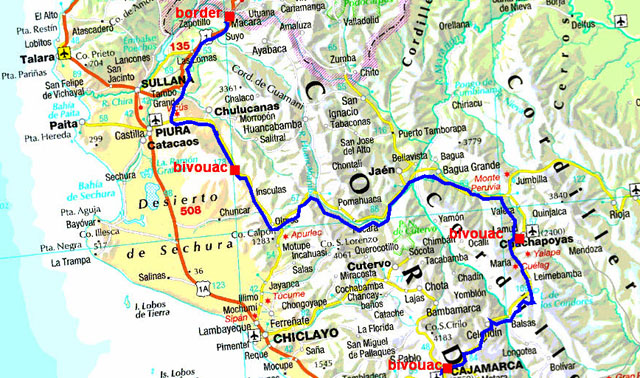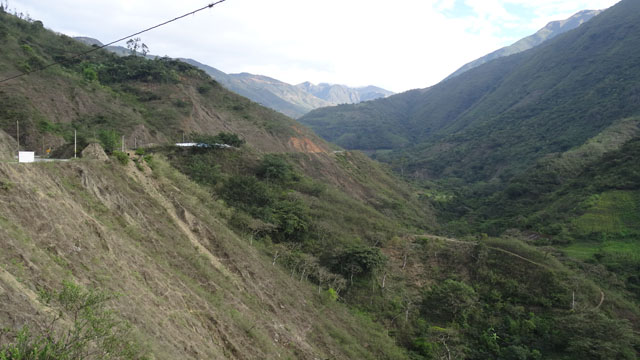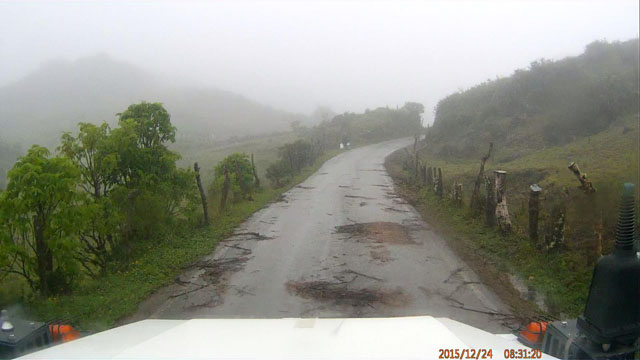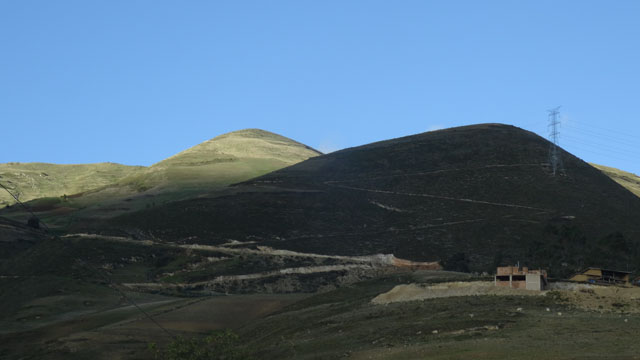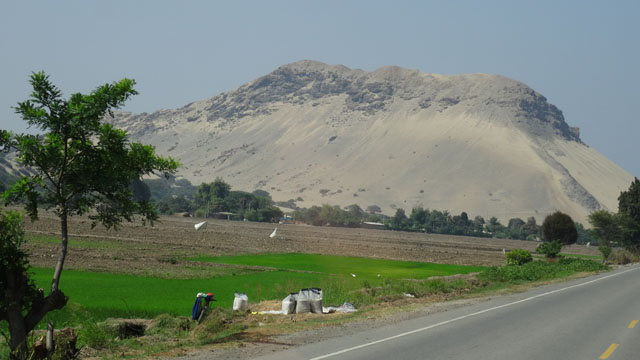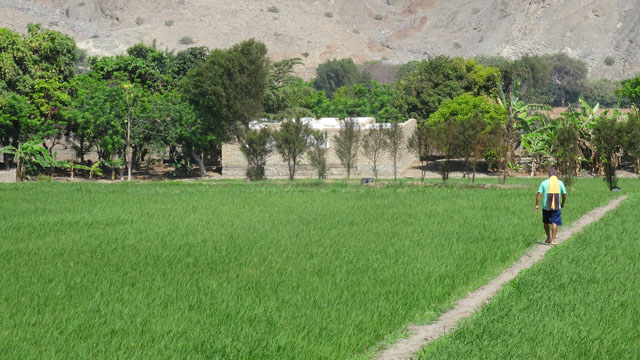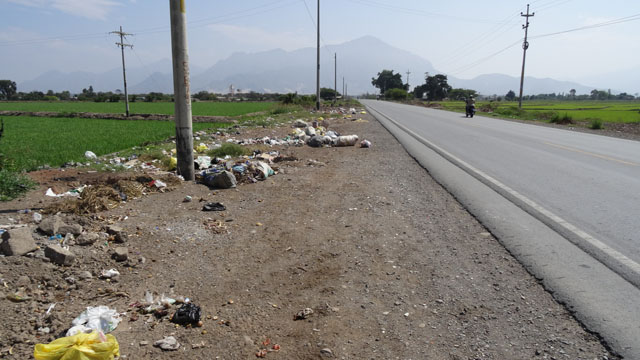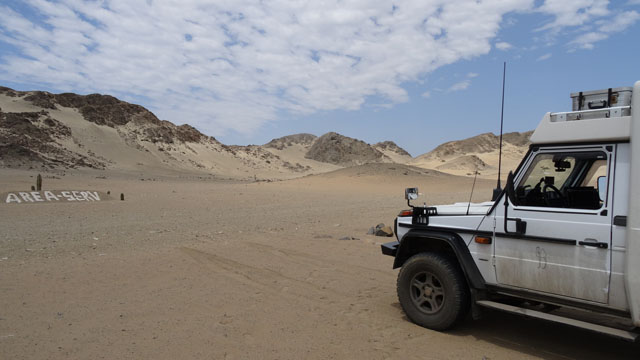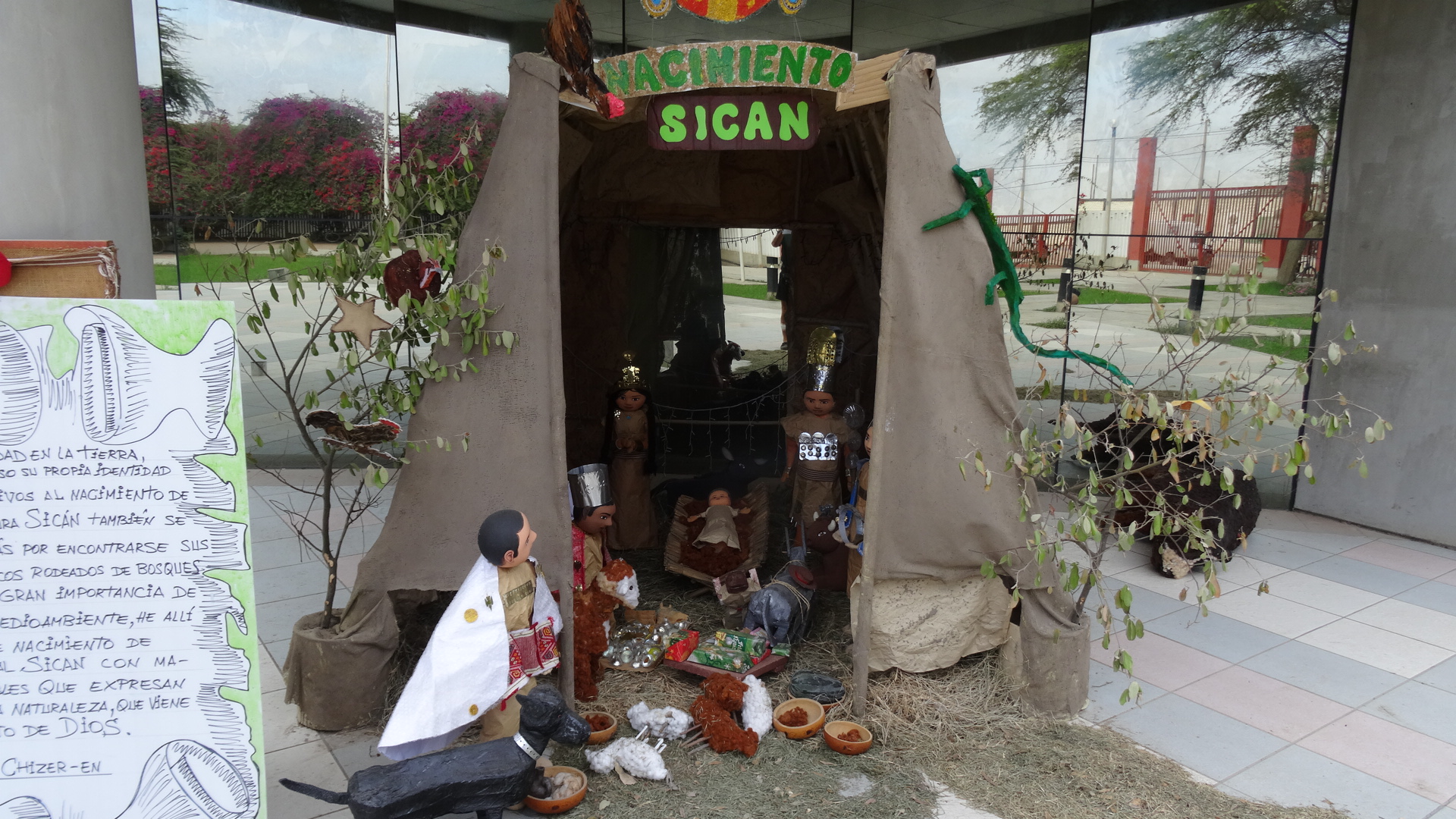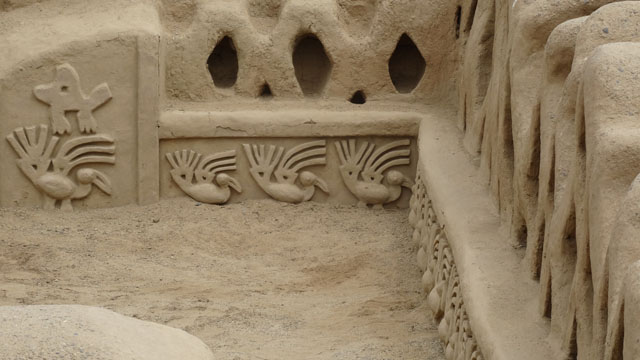Macara
The exit procedure from Ecuador then entry in Peru lasted
approximately an hour. The causes this length were in Ecuador the
slowness of the computer of the immigration service and in Peru the
incompetence of the customs officer to stock the information
necessary for the delivery of the license to circulate, a young
colleague came in reinforcement. No need to give photocopies. On the
other hand for Peru it is necessary to make stamped the information
sheet of immigration by the police before presenting it, then it is
necessary to buy the compulsory insurance before presenting itself
to the customs. A customs officer sticks a label on the windshield.
All was done in good mood.
En route #1B
Very quickly the landscape changes compared to Ecuador. After Las
Lomas it is quasi deserted during hundreds of kilometers. I stopped
in a village away from the road by asking for the authorization of
spend the night, which was granted with much kindness and attention.
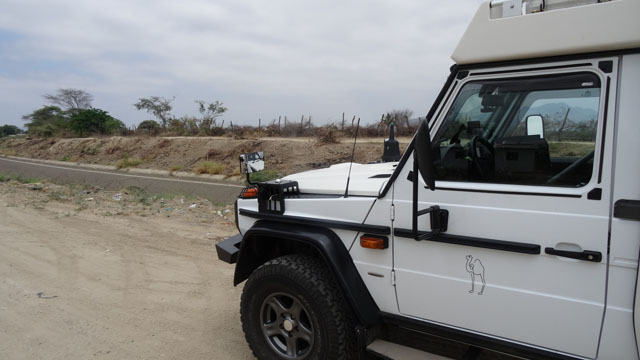 |
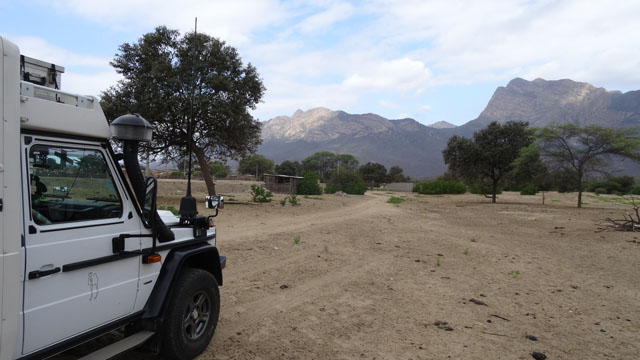 |
| Lunch puase at the edge of a canal |
Bivouac |
Chachapoyas
On Wednesday, December 23rd I wished to go to Kuelap. The distance
was large and the trip proved to be difficult with a succession of
gorges and valleys and a summit at +2100 meters of altitude.
Moreover the rain took part in the deceleration of my progression
without forgetting topes and other speed reducers. The roads are
also with tolls! Tired I decided to stop into Chachapoyas at 2384 m
of altitude on the carpark of the Hotel of Paris often used by
travellers in the motor homes.
Gorges profondes & vertes vallées, click the picture
Cajamarca
Thursday, December 24th I traversed the road #8b from Chachapoyas to
Cajamarca i.e. 329 km in nearly 9 hours. pauses included in the
mountains with a top at 3600 meters high and a low point around 880
meters between two mountain ranges. The way began under the rain and
in the fog/clouds to finish in Cajamarca under the sun at 2700
meters high. Most travellers carry out the trip into two or three
days to admire the landscapes and neighborhood sights. But in what
relates to me, planning obliges it was quasi a rally, slowly. Of
Cajamarca I do not see that the principal place to take money at the
cajero automatico of Interbank as well as a stop in Clinica
Limatambo Then I drove to bivouac in splendid Auberge San Antonio.
Road #8b from Chachapoyas to Cajamarca, click la photo
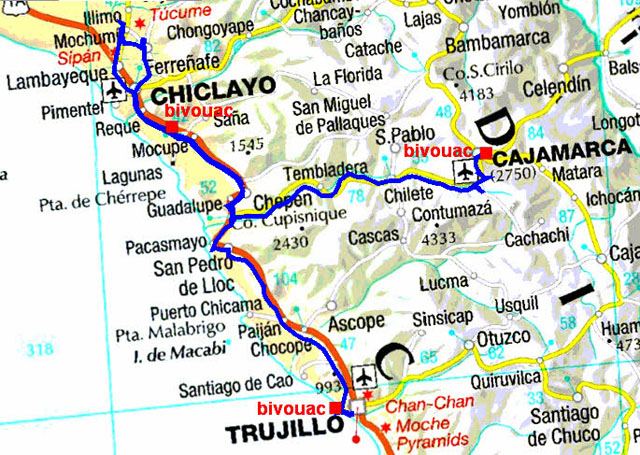
The GPS road tacklog
from Cajamarca to Huanchaco
from 2015/12/25 au 2015/12/27
Ruta #1
Friday, December 25th, Christmas Day, Jesus' nativity, I went down from
Cajamarca by the road #8 to join the Pan-American at "Ciudad de Dios",
that does not invent myself. A few 60 km further northwards in the south
of Chiclayo, a bivouac in the desert recalled me my trip on the Moroccan
tracks which I liked so much. Up to the junction the plain at the bottom
of mountains is cultivated in rice plantations with irrigation canals.
Alas the roadside is strewn with refuse. In the afternoon a strong wind
from the sea rose to refresh the atmosphere, forecasting a cool night.
The waypoint of track entrance on the Pan-American towards the
bivouac is: S 06° 56,225' W 079° 43,565' on the right coming
southwards. The track is good travelling.
Down the mountains towards the desert
Chiclayo
On Saturday, December 26th I visited three museums of recent
construction in the neighborhoods of Chiclayo. In Ferrenafe Museo
Nacional Sican exhibits the counterpart of tombs among largest of
Peru as well as interpretative panels of the various cultures and
techniques of ceramics and metallurgy of copper, gold and platinum.
In Tucume the museum at the bottom of the pyramid is very didactic
with ceramics as well as interpretative panels of the various
deities of the prehispanic cultures. Finally in Lambayeque Museo
Tumbas Reales de Sipan in a modern construction shows the royal
tombs of Sipan in a modern museography but alas too dark to read the
English comments. Moreover No Photo, I was recalled to the order by
a cerberus. Regrettable because the exposed objects are of great
beauty. I decided to return to bivouac in the desert hidden behind
the hill after having made shopping in the supermarket at the
southern exit of Chiclayo.
Musées, click the picture
Huanchaco
On Sunday, December 27th I visited in Trujillo, again 30 years
after, the site of Chan Chan capital of the Chimu empire. It is the
vastest pre-Columbian city in the Americas and the vastest city in
adobe in the world. Its population is estimated at approximately
60,000 inhabitants. The archaeological complex is composed of four
sites, I visited the museum, under reorganization, as well as the
Palacio Nik-Year, vast whole of parts of reception and ceremony in
adobe. Built around 1300 AD this city, of eroded adobe walls, view
from Pan-American gives a lunar impression made abstraction of the
current houses neighborhood, all also dilapidated. I intended to
remain at the Camping Garden RV Park in Huanchaco but it was closed
for restoration. I was installed on the beach.
Chan Chan, click the picture
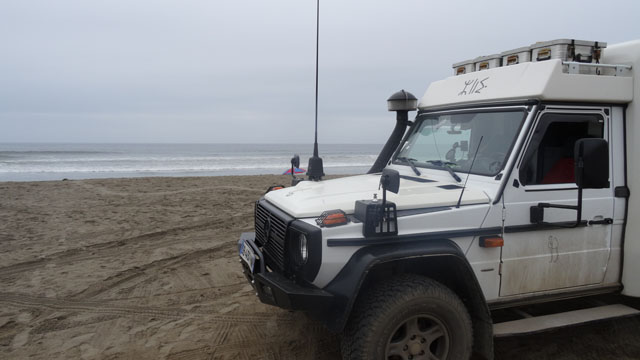 |
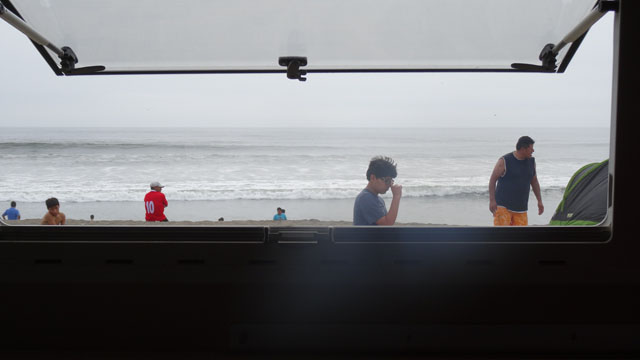 |
| Huanchaco, La Playa |
